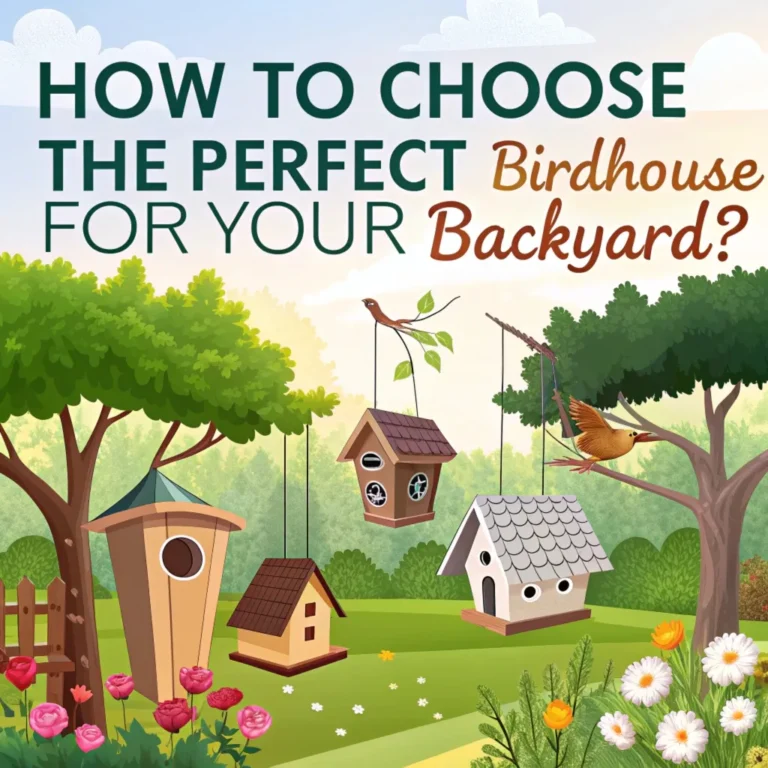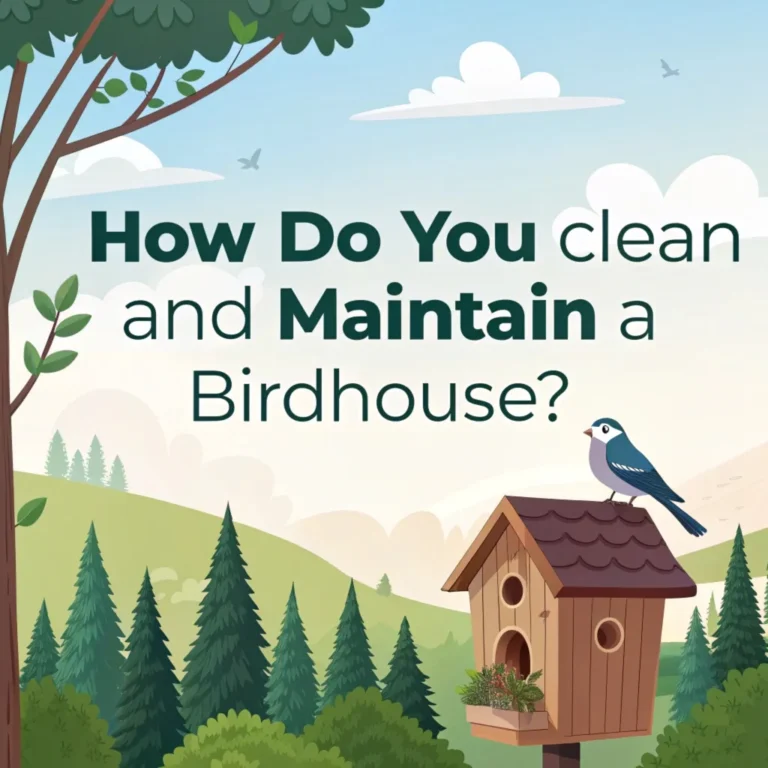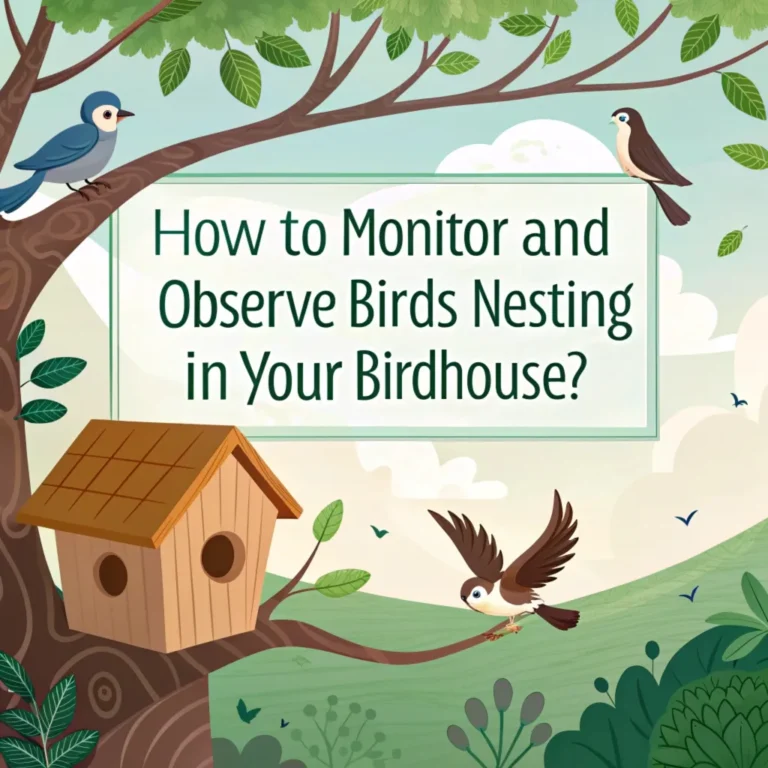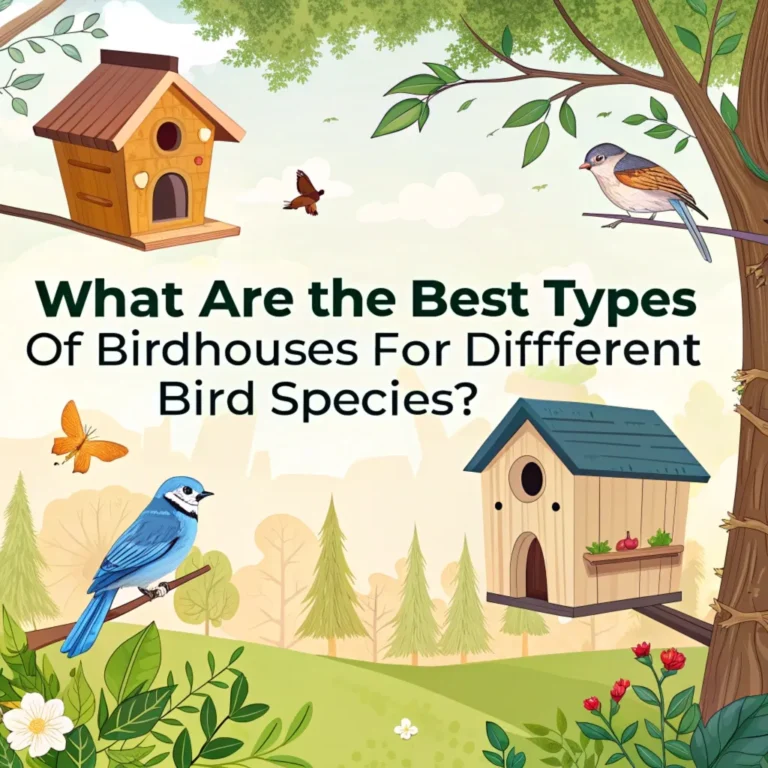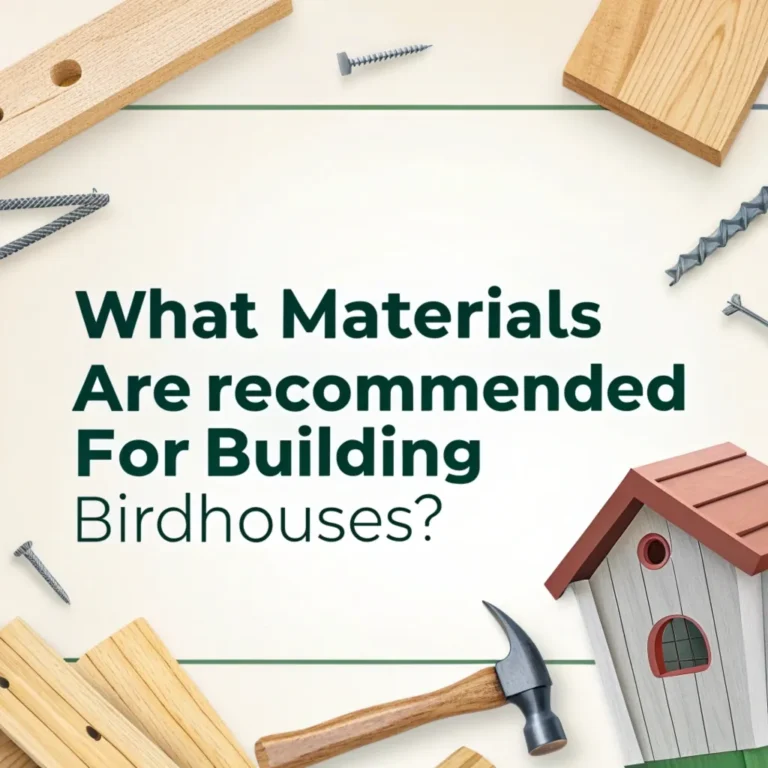How to Identify the Right Entrance Hole Size for Birdhouses?
Birdhouse entrance hole size is a key factor in attracting specific bird species. This guide explains how to select the right hole size for your birdhouse.
The information here will help you create safe and attractive nesting sites for birds in your yard. By understanding entrance hole sizes, you can enhance your birdwatching experience and support local bird populations.
This comprehensive guide will help you understand the importance of proper hole sizes and provide detailed information on selecting the ideal dimensions for various bird species.
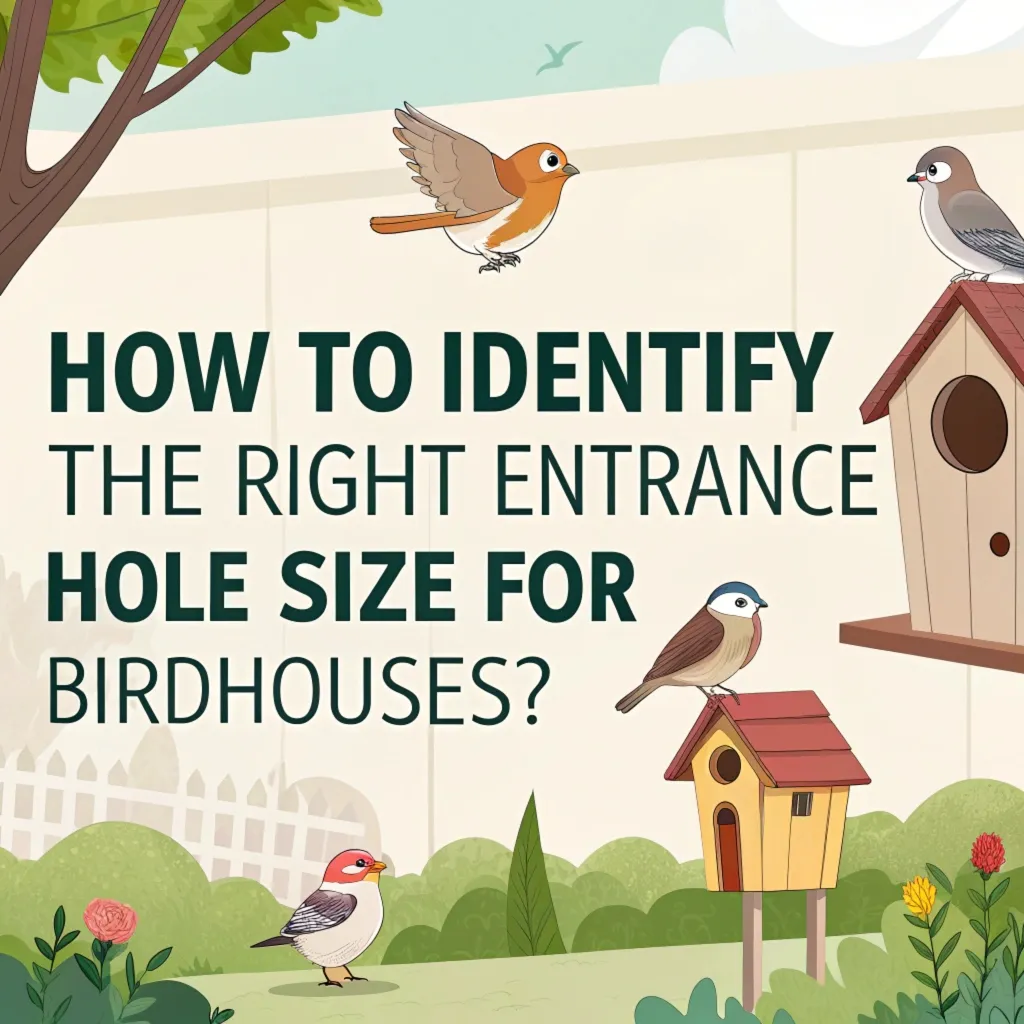
Key Takeaways
- Hole size matters: The entrance hole diameter is crucial for attracting specific bird species and keeping out predators.
- Species-specific dimensions: Different bird species require varying hole sizes, ranging from 1 inch to 3 inches or more.
- Safety considerations: Proper hole size helps protect nestlings from predators and harsh weather conditions.
- No perches needed: Avoid adding perches to birdhouses, as they can aid predators in accessing the nest.
- Ventilation and drainage: Include small ventilation holes and drainage holes in the birdhouse design for bird comfort and safety.
- Placement is key: Mount birdhouses at appropriate heights and in suitable habitats for target species.
- Regular maintenance: Clean and inspect birdhouses between nesting seasons to ensure they remain safe and attractive to birds.
Understanding Birdhouse Hole Sizes
The entrance hole size of a birdhouse is a critical factor in attracting specific bird species and ensuring their safety. Different birds have varying body sizes and preferences for nesting cavities, making it essential to choose the right hole size for your target species.
Selecting the appropriate hole size for a birdhouse is a crucial aspect of bird conservation and backyard birdwatching.
The entrance hole serves as the primary gateway for birds to access their potential nesting site, and its dimensions can significantly impact the success of nesting attempts.
By understanding the importance of hole sizes, you can create birdhouses that not only attract your desired species but also provide them with a safe and secure environment for raising their young.
Proper hole sizing goes beyond simply allowing birds to enter and exit the birdhouse. It plays a vital role in protecting the nest from predators, regulating internal temperature, and ensuring adequate ventilation.
The right hole size can deter larger birds or mammals from accessing the nest, while still allowing the intended species to comfortably enter and exit. This balance is essential for the survival of eggs and nestlings, making hole size a critical consideration in birdhouse design and selection.
Why Hole Size Matters
Proper fit: The hole size determines which birds can enter the birdhouse. If it’s too small, the intended species won’t be able to access the nest. If it’s too large, predators and unwanted species may enter.
Protection: A correctly sized hole helps keep out larger predatory birds and mammals, safeguarding the eggs and nestlings inside.
Species attraction: Specific hole sizes attract particular bird species, allowing you to target the birds you want to nest in your yard.
Common Birdhouse Hole Sizes
Here are some standard hole sizes for popular cavity-nesting birds:
- 1 1/8 inch: Suitable for chickadees, nuthatches, and wrens
- 1 1/4 inch: Ideal for titmice and downy woodpeckers
- 1 1/2 inch: Perfect for bluebirds, tree swallows, and violet-green swallows
- 2 1/4 inch: Appropriate for purple martins
- 3 inches: Suitable for American kestrels and screech owls
Choosing the Right Hole Size for Specific Birds
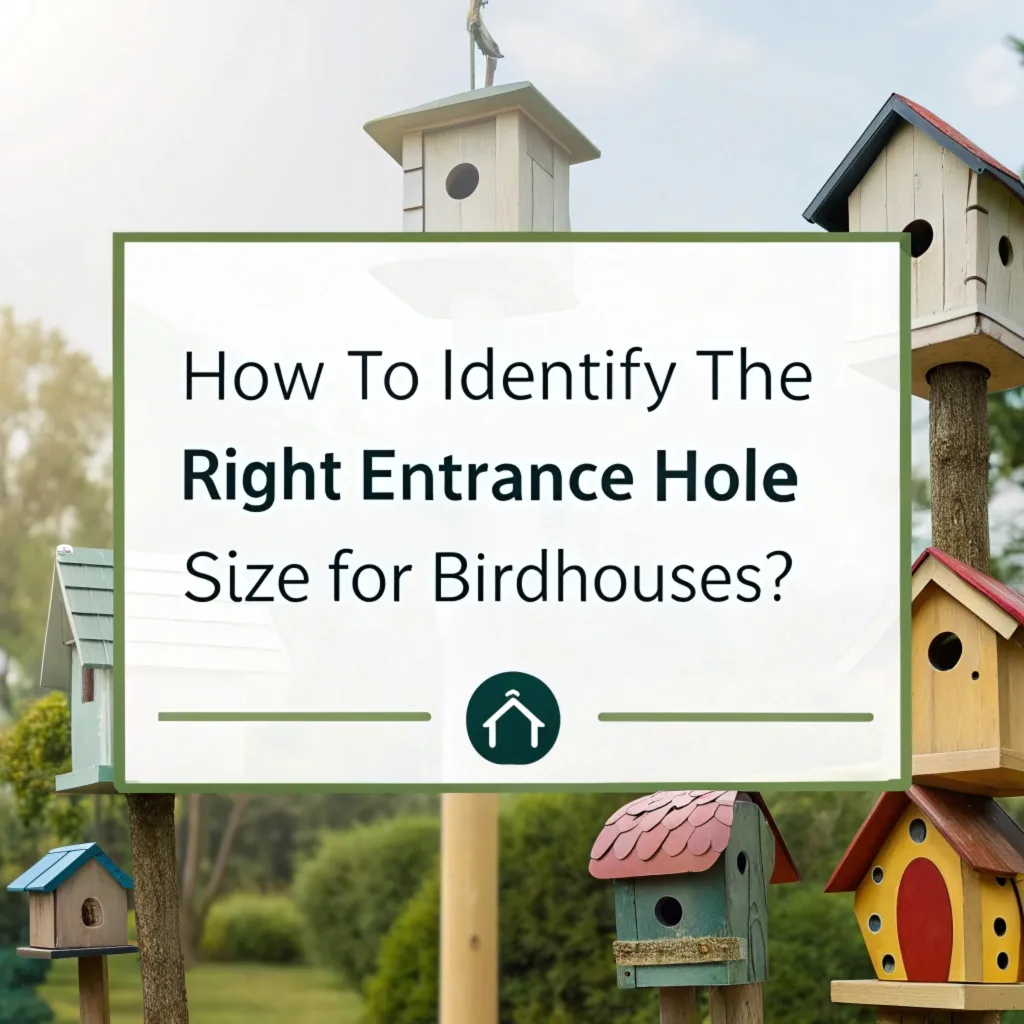
To attract your desired bird species, it’s crucial to select the appropriate hole size. Here’s a detailed guide for some common cavity-nesting birds:
Understanding the specific needs of different bird species is essential for successful birdhouse design. Each species has evolved to prefer certain nesting conditions, including the size of the entrance hole.
By tailoring your birdhouses to these preferences, you can create more attractive and suitable nesting options for your target species. This attention to detail can significantly increase the likelihood of birds choosing your birdhouse as their nesting site.
Researching local bird populations can help you determine which species are most likely to use birdhouses in your area. Consider consulting with local birding organizations or wildlife experts to gain insights into the nesting habits of birds in your region.
This knowledge can guide you in selecting the most appropriate hole sizes and birdhouse designs, ultimately contributing to the success of your birdhouse project and supporting local bird conservation efforts.
Bluebirds
Hole size: 1 1/2 inches
Floor size: 5 x 5 inches
Box height: 8-12 inches
Mounting height: 4-6 feet above ground
Bluebirds prefer open areas with scattered trees. Place the birdhouse in a meadow or near the edge of a wooded area for best results.
Chickadees
Hole size: 1 1/8 inches
Floor size: 4 x 4 inches
Box height: 8-10 inches
Mounting height: 4-15 feet above ground
Chickadees adapt well to various habitats. Mount the birdhouse in a partially shaded area near trees or shrubs.
Wrens
Hole size: 1 1/8 inches
Floor size: 4 x 4 inches
Box height: 6-8 inches
Mounting height: 5-10 feet above ground
Wrens are adaptable and will nest in various locations. Place the birdhouse near brush piles or dense shrubbery.
Purple Martins
Hole size: 2 1/4 inches
Floor size: 6 x 6 inches
Box height: 6 inches
Mounting height: 15-20 feet above ground
Purple martins are colonial nesters. Install a multi-compartment birdhouse or gourd cluster in open areas, at least 30 feet from trees.
Woodpeckers
Hole size: Varies by species (1 1/4 to 3 inches)
Floor size: 6 x 6 to 8 x 8 inches
Box height: 12-24 inches
Mounting height: 10-20 feet above ground
Woodpeckers prefer wooded areas. Mount the birdhouse on a tree trunk or sturdy pole near the edge of a forest.
Birdhouse Construction Tips
When building or selecting a birdhouse, consider these important factors:
Proper construction techniques are crucial for creating durable and effective birdhouses. The materials and design you choose can significantly impact the longevity and functionality of the birdhouse.
By paying attention to details such as ventilation, drainage, and predator protection, you can create a safe and comfortable environment for nesting birds.
Additionally, considering the specific needs of your target species when designing the birdhouse can increase its attractiveness and likelihood of use.
Sustainability in birdhouse construction is becoming increasingly important. Consider using recycled or reclaimed materials when building birdhouses to reduce environmental impact.
Additionally, choosing durable materials and construction methods can extend the life of the birdhouse, reducing the need for frequent replacements.
By incorporating eco-friendly practices into your birdhouse construction, you can support bird conservation while also promoting sustainable living in your community.
Materials
Wood: Use untreated wood, such as cedar, pine, or cypress, for birdhouse construction. These materials are durable and provide good insulation.
Avoid: Metal, plastic, or treated wood, as they can be harmful to birds or create unsuitable nesting conditions.
Design Features
Ventilation: Drill small holes (1/8 to 1/4 inch diameter) near the top of the birdhouse sides for air circulation.
Drainage: Include several 1/4-inch drainage holes in the floor to prevent water accumulation.
Roof: Design a sloped roof that extends over the sides and front to protect the entrance from rain.
Interior: Leave the inside unpainted and roughen the surface below the entrance hole to help fledglings climb out.
Predator Protection
Entrance hole guard: Install a metal plate around the entrance hole to prevent predators from enlarging it.
Deep box: Ensure the box is deep enough to keep nestlings out of reach of predators.
No perches: Avoid adding perches, as they provide easy access for predators and are unnecessary for cavity-nesting birds.
Placement and Maintenance

Proper placement and regular maintenance are essential for attracting birds and ensuring their safety.
Strategic placement of birdhouses is crucial for their success. The location you choose can significantly impact the likelihood of occupancy and the safety of nesting birds. Factors such as height, orientation, and proximity to food and water sources all play important roles in determining whether birds will use your birdhouse.
By carefully considering these factors and tailoring your placement strategy to the needs of your target species, you can create an ideal environment for nesting birds in your yard or garden.
Regular maintenance of birdhouses is essential for the health and safety of nesting birds. Over time, birdhouses can accumulate debris, parasites, and other potential hazards that can negatively impact nesting success.
By establishing a routine maintenance schedule, you can ensure that your birdhouses remain clean, safe, and attractive to birds year after year.
This ongoing care not only benefits the birds but also allows you to monitor the success of your birdhouse project and make any necessary adjustments to improve its effectiveness.
Birdhouse Placement
Height: Mount the birdhouse at the appropriate height for your target species, typically between 5 and 20 feet above ground.
Habitat: Place the birdhouse in the preferred habitat of your desired bird species.
Orientation: Face the entrance hole away from prevailing winds to protect nestlings from harsh weather.
Spacing: Space multiple birdhouses at least 50 feet apart, except for colonial nesters like purple martins.
Maintenance
Cleaning: Clean out old nesting material and debris between nesting seasons to prevent parasite buildup.
Repairs: Inspect birdhouses annually for damage and make necessary repairs.
Monitoring: Check birdhouses periodically during the nesting season to ensure they remain secure and free from pests.
FAQs
What is the ideal hole size for a general-purpose birdhouse?
A 1 1/2-inch hole size is suitable for many small to medium-sized cavity-nesting birds, including bluebirds, tree swallows, and some chickadees.
Can I use a birdhouse with a larger hole size than recommended?
It’s best to stick to the recommended hole size for your target species. Larger holes may attract unwanted species or predators, putting the nestlings at risk.
How do I prevent starlings from using my birdhouse?
To keep starlings out, ensure the entrance hole is no larger than 1 1/2 inches in diameter. For larger birds, consider using specialized starling-resistant entrance holes or active monitoring.
Should I add a perch to my birdhouse?
No, perches are unnecessary for cavity-nesting birds and can provide easier access for predators. Avoid adding perches to your birdhouse.
How often should I clean my birdhouse?
Clean your birdhouse at least once a year, preferably in late fall or early spring, before the nesting season begins. This helps prevent parasite buildup and ensures a clean environment for new nests.
By following these guidelines and selecting the appropriate entrance hole size, you can create a safe and attractive nesting site for your desired bird species.
Remember to consider the specific needs of your target birds and maintain the birdhouse regularly to ensure its continued use and the safety of its occupants.

Luna is the passionate founder and author of Birds and You, a website dedicated to sharing her love for birds with fellow enthusiasts. Through her engaging articles and guides, she aims to educate and inspire others to explore the fascinating world of birds. When she’s not writing, you can find Luna observing birds in their natural habitats or sharing beautiful bird photography on Pinterest. Join her on this journey to celebrate and protect our feathered friends!


